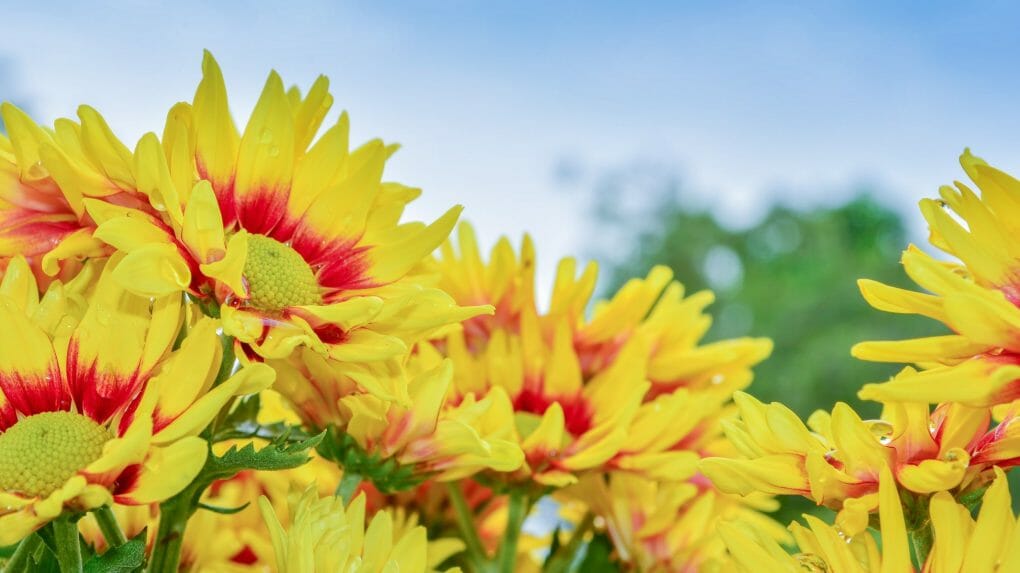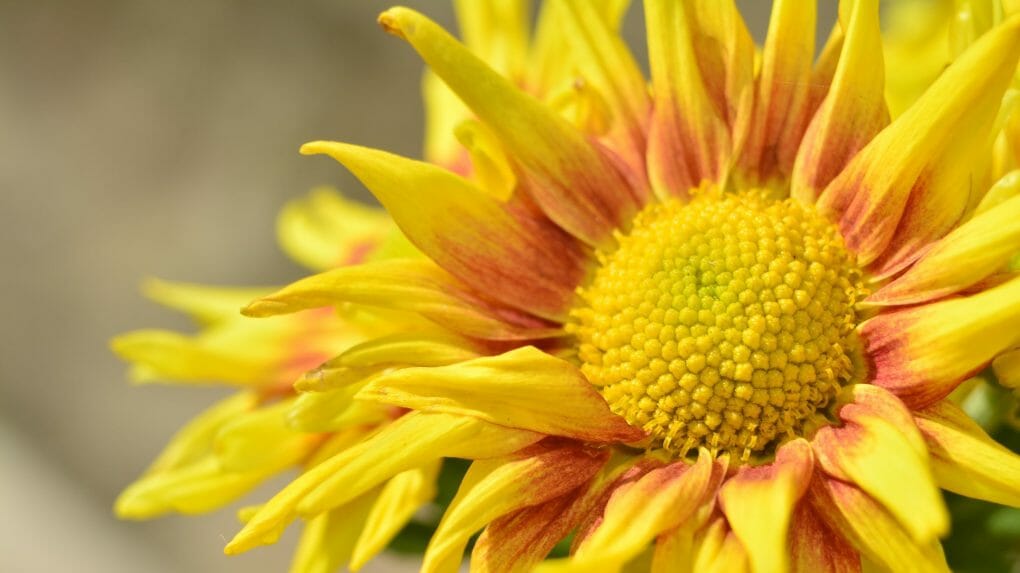Chrysanthemum Growing Conditions | Tips to Grow Beautiful Flowering Plant

Do you want to know how to grow chrysanthemums like a pro? If so, read on! This article will teach you everything you need to know about chrysanthemum growing conditions, including information on soil types, watering techniques, and more. By the time you’re finished, you’ll be able to grow chrysanthemums in any environment – indoors or outdoors!
Table of Contents
Growing Conditions for Healthy and Thriving Chrysanthemums
Sunlight
Flowers such as chrysanthemums thrive in bright sunlight. They are able to live with as little as six hours of sunlight per day, but the more sunlight they receive, the better their growth, bloom, and resistance to disease will be. Some afternoon shade is necessary for hotter gardening regions to prevent scorching in the summer. Flowers like mums open up because of their photoperiodic nature. Plants respond to a decrease in daylight hours by starting to produce buds in late summer. Mums’ flowering schedules can be influenced by proximity to porches or security lights.
Water
For optimal growth, mums need consistent moisture. Water regularly from spring through fall. After winter’s freeze, plants don’t need any more watering until the soil thaws in the spring. The best time to water your plants is early in the morning, between 6 and 8 inches deep. Mums benefit most from a method of watering that applies moisture directly to the soil around the plant’s roots. This keeps the dense foliage from suffocating in excess moisture. Using a water timer and a soaker hose, you can ensure that the soil is always moist without forgetting to water it by hand.
Soil
Chrysanthemums can grow in almost any soil, but they do best in soil that drains well and stays moist. When you grow mums in hard, dry soil, the roots don’t get a good start, and when you grow them in wet, muddy soil, the roots drown. The key is to find the middle ground. If you’ve planted other perennials, you already know how to plant chrysanthemums. Dig the soil down to a depth of 8-12 inches to make it good for your mums. Add 2-4 inches of organic material, like compost or peat moss. You can find the right texture by taking a handful of soil and squeezing it. The soil shouldn’t stick together or break up quickly when you open your hand. It should just break.
Fertilizing
Nutrients are essential for plant growth. Mums benefit from a nutrient boost from fertilizer for optimal growth. Spring and early summer are peak growing seasons for chrysanthemums. As they develop, chrysanthemums require a lot of food. Regular applications of high-quality fertilizers will encourage your mums to expand in size and blossom more frequently. From early spring to late July, apply a balanced, water-soluble fertilizer once per month. Mums planted in the fall should not be fertilized until the following spring. Chrysanthemums’ ability to withstand harsh winters can be compromised by fertilization in the fall.
Temperature and Humidity
The ideal climate for mums is one with mild winters and warm summers. Heat stress can be detrimental to plant growth. A heavy layer of mulch is essential in areas where temperatures drop below freezing during the winter. Even though humidity benefits mums, too much can cause rot and disease, so ensure there’s plenty of ventilation if you live in a humid area.
For mums planted in the autumn, extra covering should be provided for the crown and roots for plants to have a fighting chance in chilly climates. The first step is to wait until spring to remove the foliage. After the frost has caused the leaves to turn brown, you should not prune them back. Then, move the pot to a warmer and drier part of the garden for the winter. You can also cover the plants with a thick layer of mulch at least four to six inches. If you decide to transplant your plants, do so before the first hard freeze.
In warmer climates, heat delay can be used. Heat stress, especially at night, can prevent the plant from blooming. Flowers may not open properly, or they may bloom at odd times, or the plant may have a malformed crown if heat development is slowed. The solution to this issue in hotter regions is to seek out cultivars with increased heat resistance.
Propagating Chrysanthemums

Chrysanthemums can be propagated through seeds, cuttings, or plant division. Certain chrysanthemum hybrids are protected by a patent and may not be propagated without permission. Typically, this is indicated on the plant’s label.
New clumps of Chrysanthemums grow more vigorously than old, overgrown ones. After the last spring frost, when shoots are 1-3 inches tall, carefully unearth and separate them. Discard any half-dead or excessively woody divisions, and plant only the healthy ones. Add a phosphorus source and organic matter to the planting hole. Ideally, divide and relocate chrysanthemums every three to five years to prevent disease.
To start a new plant from a cutting:
- Cut a piece about 4 to 6 inches long and remove the leaves on the bottom half.
- Dip the cuttings in rooting hormone and put them about an inch deep into vermiculite, sand, or sphagnum moss.
- Make your mini-greenhouse out of a wire frame and plastic wrap.
- Put the plants in bright light, not direct sunlight, until they establish their roots.
Plant seeds at least two months before the first frost, or start them indoors during the winter. The soil should stay between 70-75°F (21-24°C), and seeds should sprout in 1 to 3 weeks.
Plant Spacing
Planting too many mums in a small space can look pretty. Spring mums are smaller and don’t seem to do a good job filling out a garden. Keep in mind that if mums are planted in the spring, they can grow as tall as three feet and as wide as three feet by the time fall rolls around. Mums tend to get bigger with age, as do many perennials. It’s important to remember that mums need plenty of room to grow, so don’t worry if your flower bed looks sparse after planting. Overcrowded plants have trouble getting enough water and nutrients, have problems with their root systems, and are more likely to be attacked by pests and develop diseases. The health of your garden and the value of your time and money are improved if you follow the plant spacing directions for your chrysanthemum variety.
Dividing Chrysanthemum
For best results, divide chrysanthemums every three to four years, as you would with most perennials. If you have mums, you may find that they are starting to look emaciated and distorted in the middle. The innermost roots of a plant can age and become woody, while the outermost roots remain young and vital. If your mums have stopped growing full and round, it may just be that they need to be divided. This is best done in the spring. Carefully dig the plant out of the ground and chop it into manageable pieces. The older, woody parts of the plant should be thrown away because they will not thrive. Plant again in garden soil high in organic matter.
